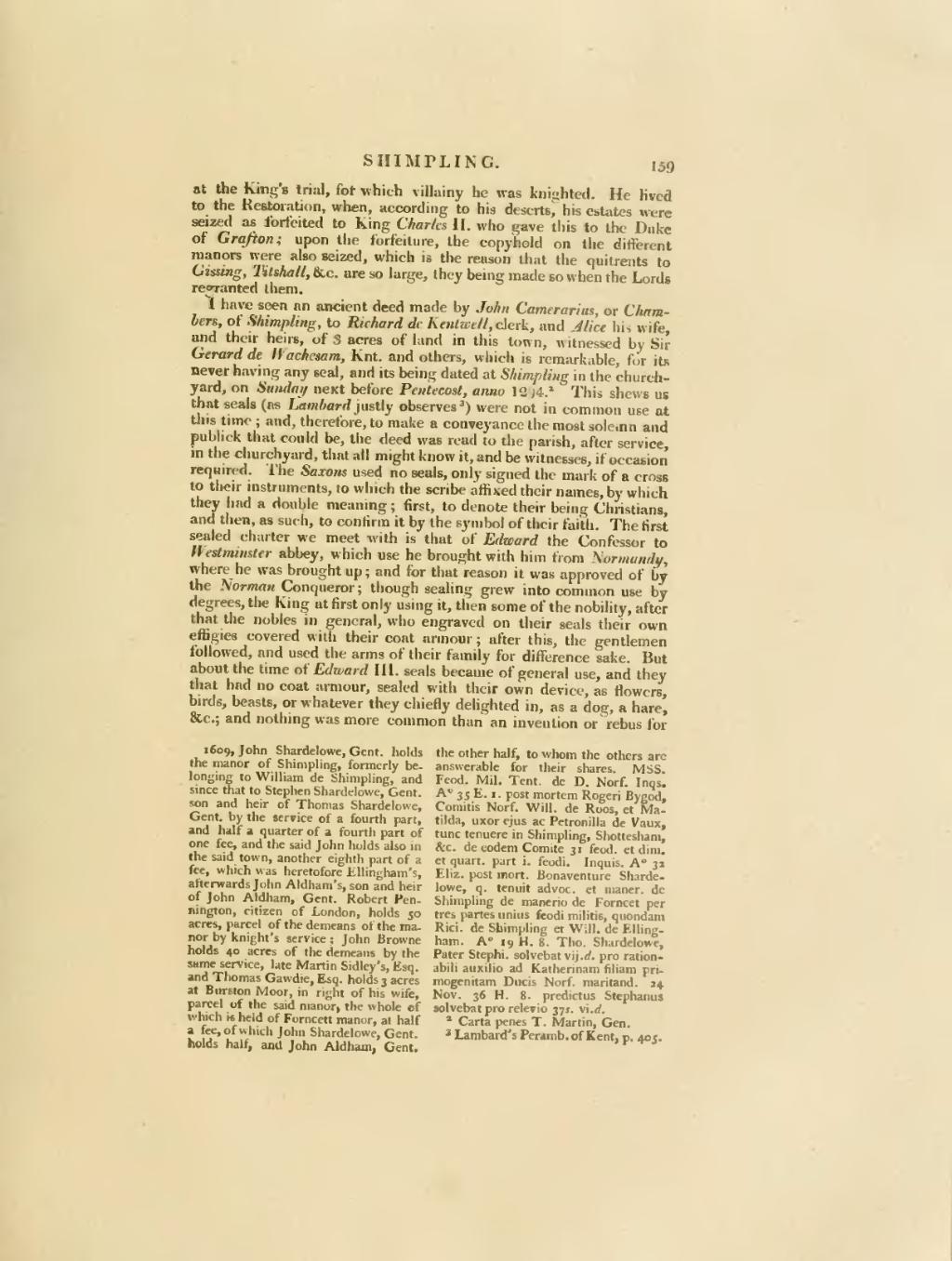at the King's trial, for which villainy he was knighted. He lived to the Restoration, when, according to his deserts, his estates were seized as forfeited to King Charles II. who gave this to the Duke of Grafton; upon the forfeiture, the copyhold on the different manors were also seized, which is the reason that the quitrents to Gissing, Titshall, &c. are so large, they being made so when the Lords regranted them.
I have seen an ancient deed made by John Camerarius, or Chambers, of Shimpling, to Richard de Kentwell, clerk, and Alice his wife, and their heirs, of 3 acres of land in this town, witnessed by Sir Gerard de Wachesam, Knt. and others, which is remarkable, for its never having any seal, and its being dated at Shimpling in the churchyard, on Sunday next before Pentecost, anno 1294. This shews us that seals (as Lambard justly observes ) were not in common use at this time; and, therefore, to make a conveyance the most solemn and publick that could be, the deed was read to the parish, after service, in the churchyard, that all might know it, and be witnesses, if occasion required. The Saxons used no seals, only signed the mark of a cross to their instruments, to which the scribe affixed their names, by which they had a double meaning; first, to denote their being Christians, and then, as such, to confirm it by the symbol of their faith. The first sealed charter we meet with is that of Edward the Confessor to Westminster abbey, which use he brought with him from Normandy, where he was brought up; and for that reason it was approved of by the Norman Conqueror; though sealing grew into common use by degrees, the King at first only using it, then some of the nobility, after that the nobles in general, who engraved on their seals their own effigies covered with their coat armour; after this, the gentlemen followed, and used the arms of their family for difference sake. But about the time of Edward III. seals became of general use, and they that had no coat armour, sealed with their own device, as flowers, birds, beasts, or whatever they chiefly delighted in, as a dog, a hare, &c.; and nothing was more common than an invention or rebus for their names, as a swan and a tun for Swanton, a hare for Hare, &c.; and because very few of the commonality
